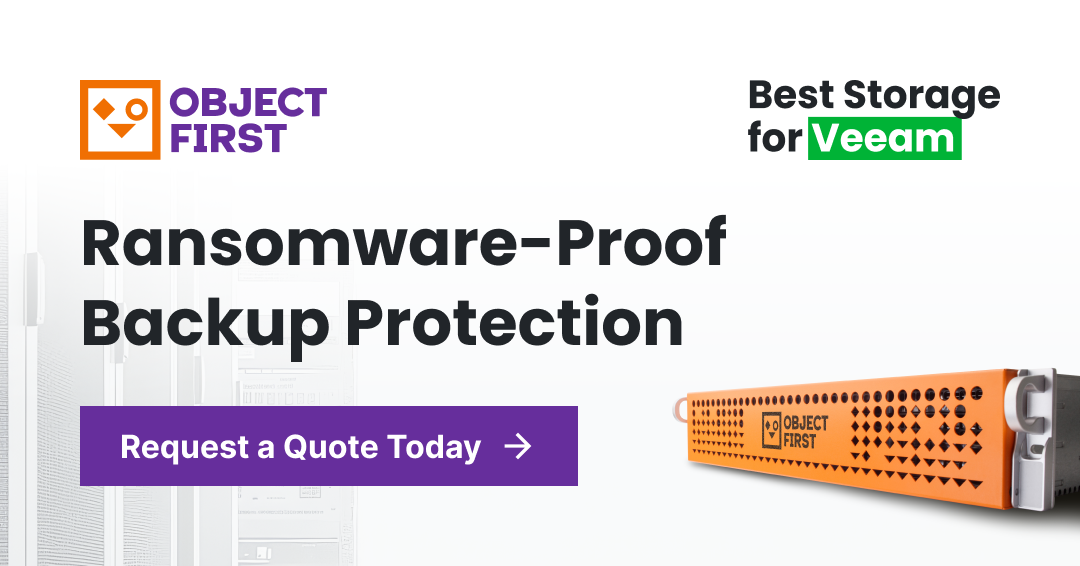Ransomware Recovery: Strategies to Prevent and Restore Your Data
2021 marked a peak in ransomware attacks, with a staggering 623.3 million incidents reported globally. Although the numbers decreased in 2022, early 2023 witnessed a resurgence in ransomware attacks, with the United States being the most heavily targeted country.
These invasive attacks pose a significant threat, leading to chaos for individuals and organizations. The consequences are severe, resulting in financial losses, operational disruptions, and reputational damage. Therefore, having a robust ransomware recovery plan is essential to mitigate these risks.
Delve into the secrets of recovering from ransomware attacks and explore proven strategies to safeguard your valuable data.
What Is a Ransomware Recovery?
Ransomware, as defined by the U.S. Cybersecurity and Infrastructure Security Agency (CISA), is malicious software that holds your files and systems hostage by encrypting them. Cybercriminals demand a ransom in exchange for unlocking your information.
The impact of ransomware can disrupt business operations and leave organizations without critical data. These attacks pose economic and reputational challenges, affecting companies of all sizes during the initial disruption and recovery stages.
Ransomware recovery involves the strategies businesses use to minimize the impact of ransomware attacks. It includes creating secure, unchangeable data backups and system snapshots for rebuilding affected systems.
The success of ransomware recovery depends on the quality of an organization’s data protection processes and the extent of damage caused.
Be Ready for Ransomware
Given the heightened risk of a ransomware attack, readiness for ransomware threats is integral to any business continuity approach. An effective response is essential because a successful attack can result in data loss and operational disruptions.
To fortify your organization against ransomware, preparedness and having a ransomware recovery plan in place is imperative. It includes implementing robust cybersecurity standards and executing an in-depth data backup strategy.
How to Apply Robust Cybersecurity Standards
The first step to shielding your organization from ransomware attacks is implementing robust cybersecurity standards. Here are some essential practices to strengthen your digital defenses:
- Install Antivirus Software and Firewalls: Installing antivirus software and firewalls creates multiple layers of protection that can detect and block ransomware threats.
- Foster Phishing Awareness: Educating employees, contractors, and vendors about phishing emails and other social engineering techniques reduces the risk of opening infected files.
- Determine Your Endpoints: Identifying potential sources of ransomware attacks allows you to prioritize and protect critical endpoints effectively.
- Update All Systems and Software Regularly: Strengthening ransomware security requires keeping your operating system, web browser, antivirus, and all software up to date with the latest versions.
How to Execute an In-Depth Data Backup Tactic
No system is entirely immune to ransomware attacks, making a solid data backup strategy essential for preparedness. Here are steps to ensure your critical data remains secure and recoverable:
- Achieve Immutability: The best way to protect and recover from ransomware attacks is by achieving immutable storage, using methods such as WORM (Write Once, Read Many) technology, object storage, or vendor-created immutability features.
- Keep Regular Backups: Maintaining up-to-date copies of your data allows for swift recovery and reduces the impact of a ransomware attack without yielding to attackers’ demands.
- Secure Data Offsite: Duplicating vital information and storing it offline or offsite ensures restoration, even if on-site backups are compromised.
- Apply the 3-2-1-1-0 Rule: Implementing the 3-2-1-1-0 rule involves having three copies of your data stored on two different media, one offsite, one offline, and no unencrypted data left unprotected.
- Evaluate Backup Options: When choosing between cloud, on-premises, or hybrid backup strategies, consider your organization’s size, security requirements, budget constraints, and available resources.
Detecting and Responding to Ransomware Attacks
Staying ahead of ransomware attacks is crucial to safeguard your organization’s data and network integrity. Detecting these threats early and responding is the linchpin for an effective ransomware recovery strategy.
Detecting Ransomware
Recognizing the subtle signs of a ransomware attack, such as a surge in disk activity, compromised system performance, the creation of unauthorized accounts, and unusual network traffic patterns, is vital.
Practical techniques for detecting ransomware include:
Signature-Based Detection
This method involves comparing ransomware binary hashes to known malware signatures, enabling fast analysis of files. However, it may struggle against new ransomware variants that frequently alter their files.
Detection Based on Data Traffic
By scrutinizing network traffic for irregular timestamps and data volume changes, this approach can detect possible ransomware attacks. Nonetheless, it can sometimes generate false positives, disrupting legitimate operations.
Detection by Data Behavior
Monitoring unexpected changes in file storage locations and heightened file encryption activities helps identify ransomware attacks. This technique is robust against false alarms and limits the spread of attacks once identified.
Deception-Based Detection
Creating a pseudo network with decoy files can confuse ransomware by directing it toward fake data and identifying attacker methods, such as exploiting weak passwords or compromised endpoints.
Responding to Ransomware
Follow this step-by-step guide to respond effectively when a ransomware attack occurs, mitigating data loss and disruption to your organization.
Step 1: Activate Your Incident Response Plan
- When a ransomware attack strikes, your first line of defense is a well-coordinated incident response plan.
- Kickstart your strategy for containing, isolating, and responding to the ransomware incident.
Step 2: Separate Altered Systems
- Begin by identifying the compromised systems that have fallen victim to the ransomware.
- Swiftly sequester these infected systems from your network and online access.
Step 3: Generate Snapshots and System Images
- Creating snapshots and system images of the affected systems is critical for assessing the attack’s scope and impact.
- This data will be invaluable for understanding the extent of the damage.
Step 4: Notify Authorities and Law Enforcement
- Report the ransomware attack to the relevant regulatory authorities and law enforcement agencies.
- Ensure your actions are in line with legal compliance and the possibility of criminal pursuit.
Step 5: Seek Assistance from Cybersecurity Specialists
- Collaborate with IT support and cybersecurity experts who are experienced in responding to ransomware emergencies.
- These specialists will help you control and minimize the attack's impact effectively.
Step 6: Consider Legal and Ethical Aspects
- To ensure minimal disruption to your organization and adhere to legal requirements, notify all affected parties.
- Assess the legal implications under data protection and privacy laws, as well as your moral obligations.
Ransomware Recovery Methods: How to Choose?
Unfortunately, no one is entirely resistant to ransomware, and it is predicted that ransomware attacks will occur every two seconds by 2031.
So, it’s not a matter of “if” but “when” you’ll get hit. Therefore, it’s crucial to have a well-thought-out ransomware recovery procedure in place.
Depending on your needs, there are several effective methods to consider for a swift recovery after an attack.
Prompt Initial Response
The response time is critical to limit the impact of a ransomware attack. As the initial step, immediately disconnect all vulnerable devices from your network to halt the propagation of the attack and prevent further damage.
Once done, report the attack to the appropriate authorities, such as the local police or trusted platforms like On Guard Online.
Your prompt action aids in identifying the attacker’s modus operandi and target selection process, ultimately preventing other organizations from falling victim to the same ransomware invasion.
Immutable Backups
One of the most effective defenses against ransomware attacks is restoring your data from immutable backups that are unchangeable and resistant to modification.
These backups provide a clean and secure copy of your files, allowing you to bypass the need to negotiate with cybercriminals and pay the ransom.
When selecting a backup solution, evaluate factors such as the volume of data requiring backup, desired backup frequency, and budget constraints. Options include manual backups and automated cloud-based services to ensure you find the right fit.
Windows System Restore
Windows System Restore is an integrated feature that empowers you to roll back your system to a previous state, encompassing files, programs, and settings.
It can help recover files encrypted by ransomware by restoring them to a point before the encryption occurs. However, it may not recover personal files or work if the ransomware has infected your computer’s restore points.
Nonetheless, understanding and utilizing Windows System Restore can enhance your recovery from ransomware and increase the likelihood of retrieving vital documents.
Decryption Tools
Ransomware decryption tools aim to decode files encrypted by ransomware, allowing users to regain access to their valuable data without meeting the financial demands of the attackers.
It’s worth noting that as cybercriminals continually develop new ransomware types, a suitable decryption tool may only sometimes be available.
Nevertheless, you can leverage these tools to enhance your ransomware data recovery plan by exercising caution, exploring reliable sources, and staying informed.
Recovering From Ransomware: What to Do After an Attack
Following a ransomware attack, it’s time to shift your focus away from dwelling on past events and direct your efforts toward a strategic and effective ransomware recovery.
The path to restoration begins with carefully planned steps, each aimed at helping your organization regain its footing and strengthen its defenses against future threats.
Explore these vital measures to navigate life after a ransomware attack:
- Keep Your Cool: When ransomware strikes and your files are held hostage, resist the urge to panic. Staying calm is your first line of defense. Hasty ransom payments may not be your only option; maintaining composure can open doors for negotiation.
- Snap a Picture: Capture the ransom note on your screen using your smartphone or a camera. If possible, take a screenshot of the infected device itself. This photo will be invaluable when filing a police report and expediting the recovery process.
- Isolate the Infected: Isolate the affected systems promptly. Ransomware often spreads laterally within networks. Disconnecting the infected systems can contain the infection, preventing further damage.
- Halt Automated Tasks: Disable automated maintenance tasks on affected systems, such as temporary file removal and log rotation. It preserves crucial files for forensics and investigative analysis by preventing these tasks from interfering.
- Safeguard Backups: Modern ransomware strains target backups to hinder recovery efforts. Secure your backups by isolating them from the network and restrict access to backup systems until the infection is eradicated.
- Identify the Culprit: Utilize free services that accept encrypted file samples, ransom notes, and any available contact information from the attacker to identify the ransomware strain. Understanding the specific strain can inform your recovery strategy.
- Change All Passwords: After disconnecting affected systems, change all online and account passwords. Once the ransomware is removed, refresh all system passwords to fortify your cybersecurity.
Ransomware Recovery With Ootbi by Object First
While a ransomware recovery plan and prevention techniques are crucial, you cannot overstate the importance of backups when dealing with ransomware attacks.
Ransomware attacks often target backups, making them a prime focus for protection. That’s why partnering with an immutable backup provider that prioritizes security and resilience and implementing additional forms, such as a 3-2-1 backup strategy, is fundamental.
By combining Veeam’s robust solutions with Ootbi by Object First’s storage capabilities, businesses can achieve ransomware-proof backups and maintain control over their critical data, regardless of the cyber threats they face.
Don’t Let Ransomware Hold You Hostage
Ransomware attacks are a significant danger, causing unbearable consequences worldwide. Therefore, a robust ransomware data recovery plan is a must to protect your valuable data.
In a ransomware incident, immutable backups are the most effective line of defense. They provide a clean and secure copy of your files, allowing you to bypass the negotiation with cyber criminals and pay the ransom.
Additionally, preventive measures like regular backups, offsite data storage, security standards, phishing awareness, and endpoint protection can significantly reduce the risk of their occurrence.
Contact us to achieve a ransomware-proof backup and maintain control over your critical data!
FAQ
What Is a Ransomware Attack?
A ransomware attack is a type of cyberattack where malicious software encrypts files on a device, rendering them inaccessible until a ransom is paid.
What Is a Ransomware Recovery?
Ransomware recovery is a set of strategies and actions that refers to restoring data and systems compromised or encrypted by ransomware, typically involving data restoration, system cleanup, and enhanced cybersecurity measures.
Why Is Ransomware Recovery Significant?
Ransomware recovery is crucial because it allows organizations to regain access to their encrypted files and resume normal operations, minimizing financial losses and reputational damage.
What Is the Best Solution to Ransomware?
Implementing immutability backups ensures that clean and secure copies of files are available for restoration, eliminating the need to pay the ransom.
How to Prevent Ransomware?
To prevent ransomware, keep regular backups, secure data offsite, establish security standards, foster phishing awareness, and identify and protect critical endpoints.
How Long Does Ransomware Recovery Take?
Recovering from ransomware can vary depending on the complexity of the attack and the size of the affected systems and data, ranging from hours to days or even longer in more severe cases.
Does Ransomware Steal Data or Only Lock It?
Ransomware can encrypt files and exfiltrate data, meaning it steals and holds files hostage while threatening to publish or sell them unless a victim pays the ransom.


